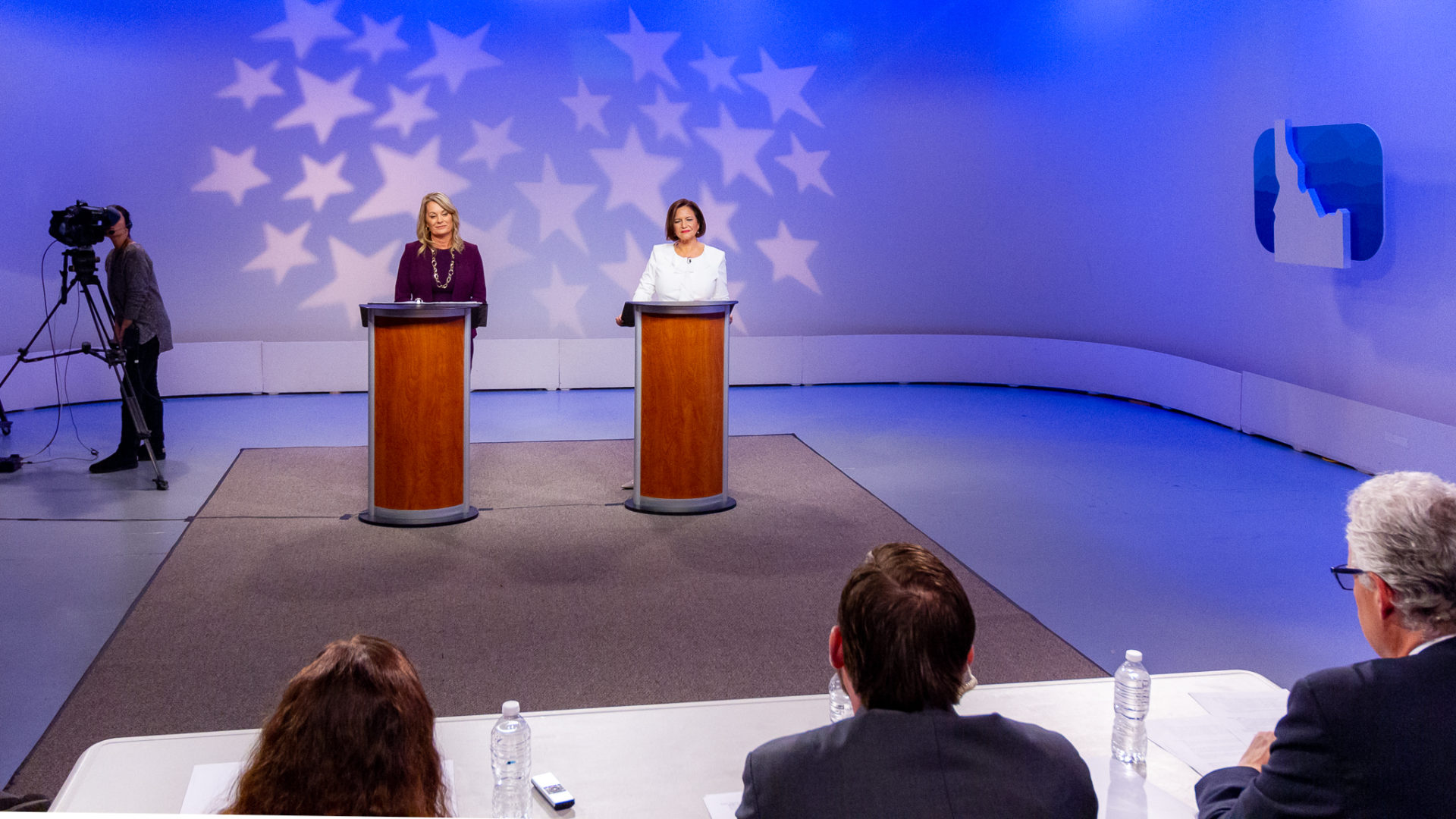The state superintendent’s race was the cliffhanger of 2014. Republican Sherri Ybarra’s victory wasn’t apparent until 5 a.m. the morning after Election Day, when final numbers rolled in from Ada County.
The state superintendent’s race could give Idaho Democrats a shot at a breakthrough on Tuesday — although the GOP has held the office for 12 years.

Will the 2018 superintendent’s race provide another nailbiter? Or an upset? Let’s map the prospects.
How Wilson could win
Ada County. Idaho’s biggest county could provide some big numbers for Cindy Wilson, Ybarra’s Democratic challenger.
In 2014, Democrat Jana Jones won Ada County by nearly 22,000 votes. Wilson might fare even better.
Here’s why. Four years ago, Ada County’s turnout was 63 percent. Recently, Ada County Clerk Chris Rich predicted a turnout of up to 73 percent in an interview with the Idaho Press.
That might be an ambitious estimate; it’s not far off from turnout in the 2016 presidential election. But if Wilson runs well in Ada County, a spike in turnout could go a long way toward carrying her to the finish line.
Bannock and Bonneville counties. Watch these two counties closely Tuesday night.
Ybarra lost both counties four years ago, getting just 43 percent of the vote in Bannock and 44 percent in Bonneville. (That latter showing is especially significant, since Bonneville is a Republican hotbed.)
Wilson has an opportunity in Eastern Idaho. She’s a Preston native who taught in Shelley. Wilson also picked up a big endorsement Monday, from Frank VanderSloot, the wealthy CEO of Idaho Falls-based Melaleuca Inc. VanderSloot is normally a Republican kingmaker, and it’s very uncommon to see him break ranks with the GOP.
Jones beat Ybarra by nearly 2,900 votes in Bannock County, and more than 3,200 votes in Bonneville County. The early numbers from these counties could say a lot about the strength of Wilson’s campaign — or the weakness of Ybarra’s campaign.
Tossup counties
Twin Falls County. A growing area that could be in play. Ybarra scraped by four years ago, at 51 percent.
Nez Perce County. A hard one to call. It went to Jones four years ago, but Ybarra managed to get 47 percent. Historically, Nez Perce has been good to Democrats. Based on recent legislative elections, however, Nez Perce could be shifting toward the GOP.
How Ybarra could win
Kootenai County. It’s not a stretch to say Ybarra clinched her 2014 win in Kootenai County. She won this GOP stronghold by more than 9,000 votes. Considering Ybarra won by fewer than 5,600 votes statewide, it’s hard to overstate the importance of Kootenai County.
There are a lot of votes up for grabs in Kootenai County. And Ybarra might need every one she can get.
One variable: In a generally comfortable Republican primary win in May, Ybarra came away with less than 52 percent of the vote.
So it bears watching to see if the Panhandle comes through big for Ybarra again — or to see if her support has eroded.
The Kootenai County vote count is notoriously slow (due in part to the time zone). Caffeinate accordingly.
Canyon County. Another big county that is reliably Republican. Ybarra won it four years ago, with 56 percent of the vote.
Rural Idaho. We’ve covered seven bellwether counties. Taken together, these counties account for nearly two thirds of the votes cast in the 2014 superintendent’s race.
But don’t discount rural Idaho, which by and large runs more red than blue.
For all of her weaknesses in urban areas, Ybarra still carried 35 of Idaho’s 44 counties last time around. Don’t discount the strength of the GOP brand across the bulk of rural Idaho. Those Lincoln Day banquets and pre-election bus tours have a cumulative impact.
Two other wild cards
The governor’s race. Generally, Democratic superintendent’s candidates outperform their party’s gubernatorial nominee. Sometimes, the spread is wide.
In 2014, Jones won 49 percent of the vote. Democratic gubernatorial candidate A J Balukoff managed 39 percent.
What happens at the top of the ticket matters. If Democratic gubernatorial candidate Paulette Jordan runs close — or pulls an upset of her own — that bodes very well for Wilson. If Republican Brad Little wins big, especially in GOP strongholds such as Kootenai and Canyon counties, this could help Ybarra.
Medicaid expansion. Supporters of the expansion effort, Proposition Two, have wisely run a campaign that crosses party lines. (Retiring Gov. Butch Otter’s late endorsement is a case in point.) This is a kitchen-table issue that could drive turnout.
And that, in turn, could help Wilson, who endorses Proposition Two. Ybarra, like Little, has refused to stake out a position on the initiative.
More reading: From Idaho Education News’ Clark Corbin, here’s what you need to know about the superintendent’s candidates. Stay current on all education-related campaign news at our elections page.
